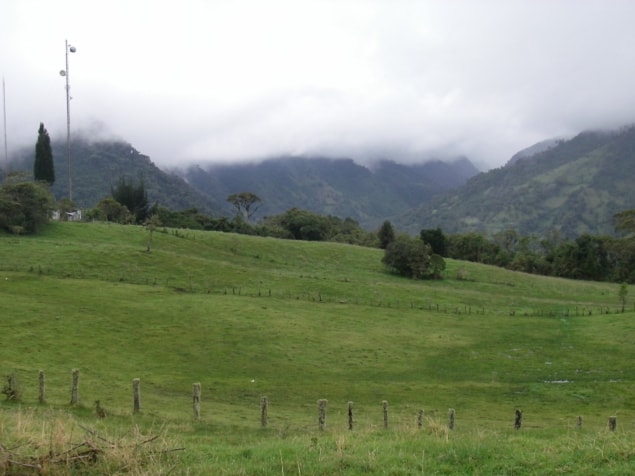
The cloud forest of Ecuador today harbours more biodiversity than almost anywhere else in the world. But it has a long record of human exploitation, as a new study has detailed.
In the mid-19th century, Western visitors described the cloud forest as a region that “has remained unpeopled by the human race” harbouring “a dense forest, impenetrable save by trails”. The study shows, however, that this was more than 30 years after human alteration of the forest resumed; the explorers weren’t seeing unspoilt forest at all.
These results could feed into the modern conservation of this cloud forest and other at-risk habitats. Historical records of ecosystems before modern damage, often used as targets for conservation efforts, may instead show habitats already altered by centuries of human impact.
The study also revealed that although indigenous people in the past carried out more deforestation than we have today, the forest was able to recover in only around 130 years.
Nicholas Loughlin of the Open University, UK, and colleagues from Ecuador, the Netherlands and Spain analysed pollen records preserved in lake sediment for the past 700 years to discover the plant species history of the cloud forest in unprecedented detail. The researchers distinguished four distinct plant communities over time, indicating changing human land use.
Loughlin and the team took cores from the bottom of Lake Huila, more than 2.5 km above sea level. They examined over 2 metres of sediment, providing a radiocarbon-dated record back to around the year 1300. Pollen arrived at the site of the lake from the local area and was preserved with the sediment, giving an excellent window into the species making up past communities.
The first phase of plant life recorded in the sediment contains maize, cultivated by the local Quijos people, and other open space-loving plants, indicating significant deforestation by humans.
The year 1588, according to the radiocarbon date, saw an abrupt change in the pollen record, with maize disappearing and huge increases in grasses and forest plants. Agriculture had ceased and the forest had begun to encroach back. The lake sediment from this time also contains large amounts of burnt charcoal; this point coincides with the height of a rebellion by indigenous peoples against the Spanish conquistadors, who arrived around 1560.
Following the rebellion, the population declined catastrophically. The cloud forest continued to re-establish through this period and into the next. After 1718, grass pollen is almost absent from the core and the pollen record is dominated by the plants you’d expect to find in a cloud forest. This period is the one most like the forest before humans arrived some 40,000 years ago, demonstrating the ecosystem’s ability to recover to a near-natural state following the end of human impacts. Following 1819, the flora in the sediment changes again, with less forest pollen, more grasses and the appearance of fungi that live on dung; this shows the beginning of cattle farming and the resumption of deforestation.
Loughlin and colleagues published their findings in Nature Ecology and Evolution.



